Icom IC-7400 Bedienungsanleitung
Lies die bedienungsanleitung für Icom IC-7400 (116 Seiten) kostenlos online; sie gehört zur Kategorie Empfänger. Dieses Handbuch wurde von 50 Personen als hilfreich bewertet und erhielt im Schnitt 3.5 Sterne aus 25.5 Bewertungen. Hast du eine Frage zu Icom IC-7400 oder möchtest du andere Nutzer dieses Produkts befragen? Stelle eine Frage
Seite 1/116

HF/VHF
ALL MODE TRANSCEIVER
i7400
INSTRUCTION MANUAL

i
FOREWORD
We understand that you have a choice of many differ-
ent radios in the market place. We want to take a cou-
ple of moments of your time to thank you for making
the IC-7400 your radio of choice, and hope you agree
with Icom’s philosophy of “technology first”.Many hours
of research and development went into the design of
your IC-7400.
FEATURES
• 32-bit Floating point DSP and 24-bit AD/DA converter
• DSP IF Filter creates 102 types of filter
• All mode capability covering 160–2 m
• 100 Watt continuous duty cycle
• All mode digital modulation and demodulation
• RTTY demodulator and decoder
• Twin Pass Band Tuning
• RF speech compression with selectable pass band
• Microphone Equalizer
• SSB/CW synchronous tuning
IMPORTANT
READ THIS INSTRUCTION MANUAL
CAREFULLY before attempting to operate the
transceiver.
SAVE THIS INSTRUCTION MANUAL. This
manual contains important safety and operating in-
structions for the IC-7400.
EXPLICIT DEFINITIONS
PRECAUTIONS
RWARNING HIGH VOLTAGE! NEVER attach an
antenna or internal antenna connector during transmis-
sion. This may result in an electrical shock or burn.
RNEVER apply AC to the [DC13.8V] jack on the trans-
ceiver rear panel. This could cause a fire or ruin the trans-
ceiver.
RNEVER apply more than 16 V DC, such as a 24 V
battery, to the [DC13.8V] jack on the transceiver rear
panel. This could cause a fire or ruin the transceiver.
RNEVER let metal, wire or other objects touch any in-
ternal part or connectors on the rear panel of the trans-
ceiver. This may result in an electric shock.
NEVER expose the transceiver to rain, snow or any liquids.
AVOID using or placing the transceiver in areas with tem-
peratures below –10°C (+14°F) or above +60°C (+140°F).
Be aware that temperatures on a vehicle’s dashboard can
exceed 80°C (+176°F), resulting in permanent damage to
the transceiver if left there for extended periods.
AVOID placing the transceiver in excessively dusty envi-
ronments or in direct sunlight.
AVOID placing the transceiver against walls or putting
anything on top of the transceiver. This will obstruct heat
dissipation.
Place unit in a secure place to avoid inadvertent use by
children.
During mobile operation, operate the transceiverDO NOT
without running the vehicle’s engine. When the trans-
ceiver’s power is ON and your vehicle’s engine is OFF,
the vehicle’s battery will soon become exhausted.
Make sure the transceiver power is OFF before starting
the vehicle. This will avoid possible damage to the trans-
ceiver by ignition voltage spikes.
During maritime mobile operation, keep the transceiver
and microphone as far away as possible from the magnetic
navigation compass to prevent erroneous indications.
BE CAREFUL! The heatsink will become hot when oper-
ating the transceiver continuously for long periods.
BE CAREFUL! If a linear amplifier is connected, set the
transceiver’s RF output power to less than the linear am-
plifier’s maximum input level, otherwise, the linear ampli-
fier will be damaged.
Use Icom microphones only (supplied or optional). Other
manufacturer’s microphones have different pin assign-
ments, and connection to the IC-7400 may damage the
transceiver.
WORD DEFINITION
R
R
R
R
RWARNING Personal injury, fire hazard or electric
shock may occur.
CAUTION Equipment damage may occur.
NOTE
If disregarded, inconvenience only. No
risk or personal injury, fire or electric
shock.

ii
SUPPLIED ACCESSORIES
The transceiver comes with the following accessories.
Qty.
qDC power cable* ................................................ 1
wHand microphone (HM-36) ................................ 1
eSpare fuses (FGB 30 A) .................................... 2
rSpare fuse (FGB 5 A) ........................................ 1
tCW keyer plug (AP-330) .................................... 1
*The illustration shows OPC-025D. However, OPC-639 is
supplied with versions, which “CE” symbol on the serial
number.
TABLE OF CONTENTS
q w
e r t
FOREWORD ..................................... i
IMPORTANT ..................................... i
EXPLICIT DEFINITIONS .................. i
PRECAUTIONS ................................ i
TABLE OF CONTENTS ................... ii
QUICK REFERENCE GUIDE ..... I –X
■Installation ....................................... I
■Operation ....................................... III
■Your first contact ........................... IV
■Ready to call CQ? ......................... IX
1 PANEL DESCRIPTION ........ 1– 12
■Front panel ..................................... 1
■Rear panel ...................................... 7
■LCD display .................................... 9
■Multi function switches .................. 11
■Microphone (HM-36) .................... 12
2 INSTALLATION AND
CONNECTIONS ................ 13– 17
■Unpacking .................................... 13
■Selecting a location ...................... 13
■Grounding ..................................... 13
■Antenna connection ...................... 13
■Required connections ................... 14
■Advanced connections ................. 15
■Power supply connections ............ 16
■Linear amplifier connections (not
usable in European countries)....... 17
■External antenna tuner
connections .................................. 17
3 BASIC OPERATION .......... 18 – 25
■When first applying power
(CPU resetting) ............................. 18
■Initial settings ................................ 18
■Selecting an operating band ........ 19
■Selecting VFO/memory mode ...... 20
■VFO operation .............................. 20
■Frequency setting ......................... 21
■Operating mode selection ............ 23
■Volume setting .............................. 23
■Squelch and receive (RF)
sensitivity ...................................... 24
■Basic transmit operation ............... 25
4 RECEIVE AND TRANSMIT 26–45
■Operating SSB ............................. 26
■Operating CW ............................... 27
■Electronic keyer functions ............ 29
■Operating RTTY (FSK) ................. 35
■RTTY functions ............................. 36
■Operating AM ............................... 40
■Operating FM ............................... 41
■Repeater operation ....................... 44
5 FUNCTIONS FOR RECEIVE
........................................ 46– 53
■Simple band scope ....................... 46
■Preamp/Attenuator ....................... 47
■RIT function .................................. 47
■AGC function ................................ 48
■IF filter selection ........................... 49
■IF (DSP) filter shape ..................... 50
■Noise blanker ............................... 50
■Meter peak hold function .............. 50
■Twin PBT operation ...................... 51
■Noise reduction ............................ 52
■Notch function .............................. 52
■Dial lock function .......................... 52
■Voice squelch control function ...... 53
6 FUNCTIONS FOR TRANSMIT
............................................ 54 – 60
■VOX function ................................ 54
■Break-in function .......................... 55
■∂TX function ................................ 56
■Monitor function ............................ 56
■Speech compressor ..................... 57
■Transmit filter width selection ....... 57
■Split frequency operation .............. 58
■Quick split function ....................... 59
■Measuring SWR ........................... 60
7 MEMORY OPERATION ..... 61 – 67
■Memory channels ......................... 61
■Memory channel selection ............ 61
■Programming a memory ............... 62
■Memory clearing ........................... 62
■Selecting the call channel ............. 63
■Programming the call channel ...... 63
■Frequency transferring ................. 64
■Programming scan edges ............ 65
■Assigning memory names ............ 66
■Memo pads ................................... 67
8 SCANS .............................. 68– 73
■Scan types .................................... 68
■Preparation ................................... 68
■Voice squelch control function ...... 69
■Scan set mode ............................. 69
■Programmed scan/Fine programmed
scan .............................................. 70
■Memory scan operation ................ 71
■Select memory scan ..................... 71
■∂ ∂F scan operation and Fine F scan
...................................................... 72
■Tone scan/DTCS code scan
operation ...................................... 73
9 ANTENNA TUNER OPERATION
......................................... 74–76
■Antenna connection and selection 74
■Antenna tuner operation ............... 75
■Optional external tuner operation . 76
10 DATA COMMUNICATION .. 77– 79
■Connections ................................. 77
■Packet (AFSK) operation .............. 78
■Adjusting the TNC output level ..... 79
■Data transmission speed .............. 79
11 SET MODE ......................... 80–88
■General set mode ......................... 80
■Tone control set mode .................. 88
12 OPTION INSTALLATION .. 89 – 90
■Opening the transceiver’s case .... 89
■UT-102
VOICE SYNTHESIZER UNIT
... 89
■CR-338
HIGH STABILITY CRYSTAL UNIT
..................................................... 90
13 MAINTENANCE ................. 91–93
■Trouble shooting ........................... 91
■Fuse replacement ......................... 92
■Tuning dial brake adjustment ....... 92
■Resetting the CPU ........................ 93
■Frequency calibration (approximate)
..................................................... 93
14 CONTROL COMMAND ...... 94–98
■Remote jack (CI-V) information .... 94
15 SPECIFICATIONS..................... 99
16 OPTIONS................................. 100
17 ABOUT CE ...................... 101–102
Icom, Icom Inc. and the logo are registered trademarks of Icom Incorporated (Japan) in the United States, the United King-
dom, Germany, France, Spain, Russia and/or other countries.
Produktspezifikationen
| Marke: | Icom |
| Kategorie: | Empfänger |
| Modell: | IC-7400 |
Brauchst du Hilfe?
Wenn Sie Hilfe mit Icom IC-7400 benötigen, stellen Sie unten eine Frage und andere Benutzer werden Ihnen antworten
Bedienungsanleitung Empfänger Icom

5 Oktober 2024

5 Oktober 2024

29 September 2024

28 September 2024

22 September 2024

22 September 2024

21 September 2024

21 September 2024

18 September 2024

17 September 2024
Bedienungsanleitung Empfänger
- SPL
- Wet Sounds
- Fusion
- Ecler
- Bush
- Fostex
- Pyramid
- CSL
- TV One
- Audioengine
- Clare Controls
- Scosche
- Ibiza Sound
- Wavtech
- Vivolink
Neueste Bedienungsanleitung für -Kategorien-

17 Juni 2025
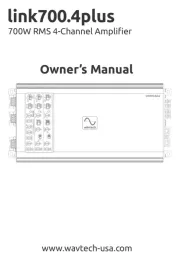
17 Juni 2025

16 Juni 2025
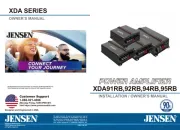
16 Juni 2025

16 Juni 2025
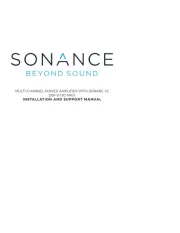
15 Juni 2025

15 Juni 2025
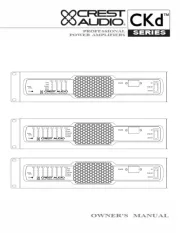
15 Juni 2025
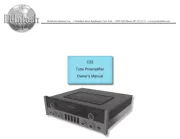
15 Juni 2025
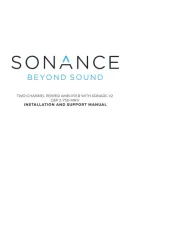
15 Juni 2025